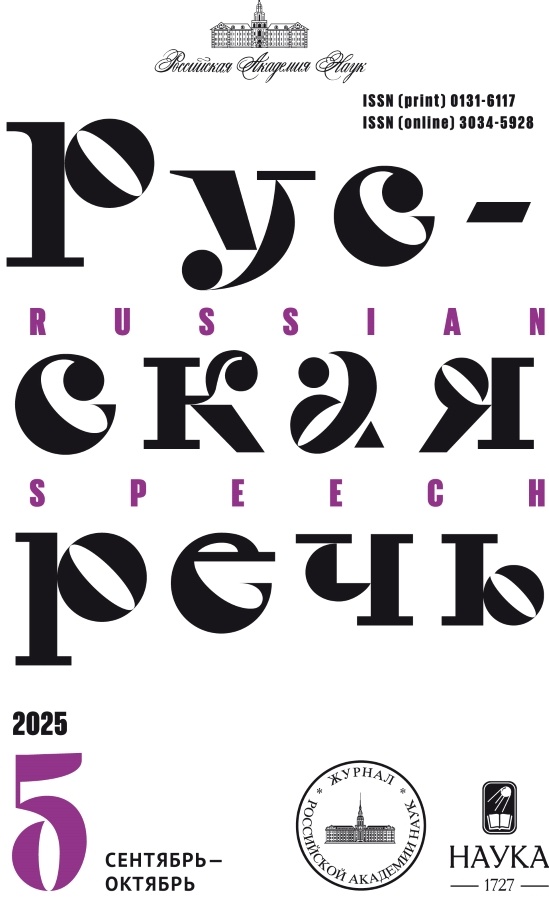Особенности эпитетов в поэзии К. М. Симонова: грамматические и семантические трансформации
- Авторы: Коржова И.Н.1
-
Учреждения:
- Московский финансово-промышленный университет
- Выпуск: № 4 (2023)
- Страницы: 90-101
- Раздел: Статьи
- URL: https://kazanmedjournal.ru/0131-6117/article/view/652361
- DOI: https://doi.org/10.31857/S013161170026391-9
- ID: 652361
Полный текст
Аннотация
В статье рассмотрены некоторые виды эпитетов, характерные для идиостиля К. М. Симонова – поэта. Продуктивным для автора типом является гипаллага, служащая средством создания новых, более дробных названий для предметов и явлений. При этом гипаллага выдвигает значимые для Симонова категории. Так, многие перенесенные эпитеты закрепляют представление о временном или пространственном раздвоении мира, мифопоэтическое в своих истоках. Другой тип эпитетов в поэзии Симонова связан с употреблением относительных прилагательных в конструкциях с намеренным нарушением лексической сочетаемости. Подобные прилагательные имеют неоднозначную грамматическую природу. Ряд из них продолжает указывать на отношение, но вбирает авторскую оценку явлений, апеллирует к сложной сети ассоциаций. Другие окачествляются и приближаются к метафоре. Наконец, особую группу составляют развернутые эпитеты, выраженные причастным оборотом. Их цельность подчеркивается опорой на идиомы, включением в ряд однородных членов с простыми эпитетами, грамматической трансформацией, пунктуационным и графическим оформлением. Выявленные виды эпитетов призваны быть средством предметной и понятийной конкретизации, оформлять представление об особом подклассе предметов и явлений. В отдельных случаях эпитеты способствуют объективации форм психологического анализа.
Список литературы
- Баранчеева Е. И. Семантические механизмы английского перенесенного эпитета // Вестник Новосибирского государственного педагогического университета. 2016. № 2. С. 94–103.
- Барсукова С. С. Основы лексического диссонанса // Язык: мультидисциплинарность научного знания. Научный альманах. Барнаул: АлтГПА, 2013. С. 14–20.
- Виноградова В. Н. Определения в поэтической речи // Поэтическая грамматика. Т. 1. / Ковтунова И. И., Николина Н. А., Красильникова Е. В. (отв. ред.). М.: Азбуковник, 2005. С. 328–375.
- Ковтунова И. И. Принцип неполной определенности и формы его грамматического выражения в поэтическом языке ХХ века // Очерки истории языка русской поэзии ХХ века. Грамматические категории. Синтаксис текста. М.: Наука, 1993. С. 106–153.
- Кубаева Ф. Р. Когнитивно-семантические характеристики перенесенного эпитета в английском языке: автореф. дис. ... канд. филол. наук. Пятигорск, 2009. 26 с.
- Невская Л. Г. Молчание как атрибут смерти // Мир звучащий и мир молчащий: Семиотика звука и речи в традиционной культуре славян. М.: Индрик, 1999. С. 123–134.
- Саенко Ю. В. Психологические аспекты суеверий и суеверности // Известия высших учебных заведений. Северо-Кавказский регион. Общественные науки. 2005. № 6. С. 86‒95.
- Симонов К. М. Стихотворения и поэмы. Л.: Советский писатель, 1982. 203 с.
- Сковородников А. П. (ред.). Энциклопедический словарь-справочник. Выразительные средства русского языка и речевые ошибки и недочеты. М.: Флинта, 2011. 480 с.
- Fauconnier G., Turner M. Conceptual Integration Networks // Cognitive Science. 1998. No. 22, part 2. P. 133–187.
- Wang X. Interpretation of transferred epithet by means of conceptual integration theory // Journal of language teaching and research. 2013. Vol. 4. No. 5. P. 1072–1078.










